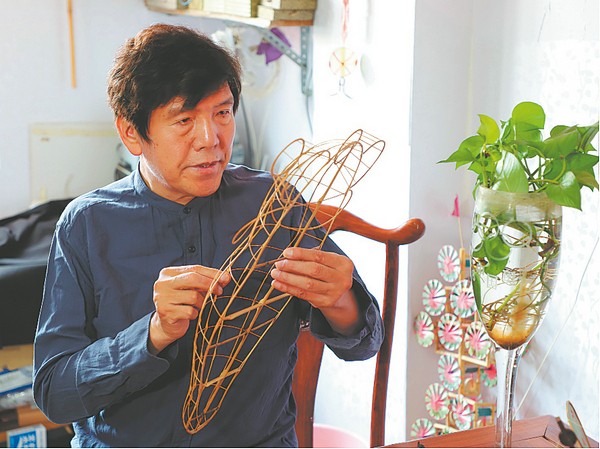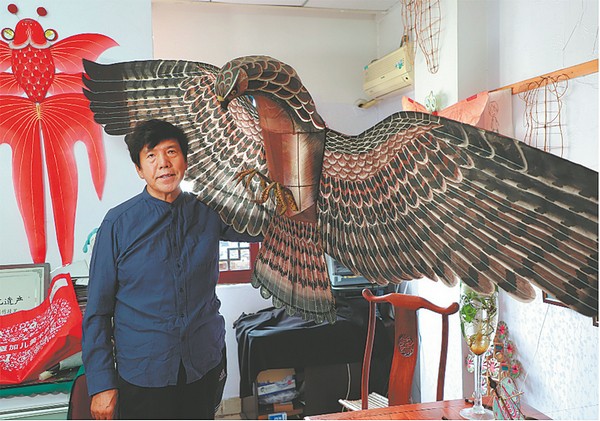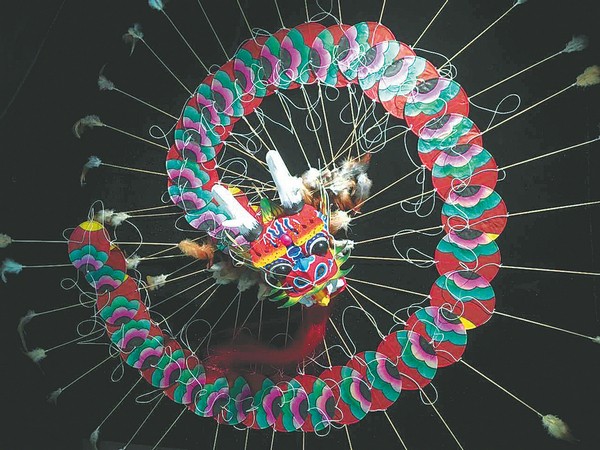Flights of kites
By Cheng Yuezhu| (China Daily)| Updated : 2024-04-30
Print Print
Wei Guoqiu, 63, works on the intricate bamboo frame of a kite. The artisan from Tianjin is known for his lifelike kites. [Photo/China Daily]
Novel development
One of history's most famous kite lovers is Cao Xueqin, a literary giant of the Qing Dynasty who wrote the seminal novel, Dream of the Red Chamber. In the book, kite flying was portrayed as a pastime of the genteel protagonist family and was also used as metaphors for the characters' destinies.
In the book's 70th chapter, a main character suggests kite flying to "let go of bad luck" — a belief traditionally associated with kites.
"In the past, when it came to Cold Food Festival and Tomb Sweeping Day, kite flying was considered a key custom," Ma explains.
"After making sacrifices to ancestors, people would fly kites, which on one hand expresses thoughts about family members and on the other lets go of all unhappiness and ill omens."
And on Dragon Boat Festival, which was traditionally believed to be the most poisonous day of the year — with mosquitoes and flies breeding in large numbers, as well as various bacteria multiplying in summer — people would fly kites, representing the shaking off of misfortune, so that family members could live long and healthy lives, Ma adds.

Wei Guoqiu from Tianjin is known for his lifelike kites. [Photo/China Daily]
Cao wrote another book in his later years that compiled the kite-making techniques of both southern and northern China, recording the skills of kite making and flying, using mnemonic rhymes and illustrations to help readers understand and remember these techniques.
"When Cao wrote the book, his main wish was to help people with disabilities or otherwise struggling financially to acquire a skill, so they could support themselves," says Miao Bogang, 43, a representative inheritor of "Cao's kites".
The book, however, was only privately collected and withdrawn from circulation until 1943, when Kong Xiangze, who was then a student of painting and sculpture, was assigned by his teacher to transcribe a borrowed manuscript, which turned out to be Cao's work on kites.
Due to time limits, Kong only managed to make records of 14 of the 43 varieties in the book, and later spent decades working on restoring and refining these techniques, which he named "Cao's kites".

Dragon-headed centipede kites made by Yang Hongwei, a national-level representative inheritor of kite-making techniques in Weifang, Shandong province, which is renowned as the "world capital of kites". [Photo/China Daily]
Miao was a kite-making enthusiast in his teenage years and was introduced to Kong Lingmin, son of Kong Xiangze and an inheritor of "Cao's kites", who recognized Miao's talent and diligence, and took him in as an apprentice.
"I've followed him in studying 'Cao's kites' for more than 20 years, during which time I've come to truly understand the techniques for making, and the principles of flying, kites, as well as Cao's humanitarian spirit when he wrote this book," Miao says.
"Both masters (Kong Xiangze and Kong Lingmin) told me: Skills belong to individuals; culture belongs to societies. So, we as inheritors have been focusing on passing down kite-making techniques and sharing this culture with as many people as possible."

 Insights from the 10th Nishan Forum
Insights from the 10th Nishan Forum  Confucian culture thrives: Integrating its wisdom into modern value
Confucian culture thrives: Integrating its wisdom into modern value  Confucianism's enduring influence: Shaping East, Southeast Asian civilizations
Confucianism's enduring influence: Shaping East, Southeast Asian civilizations